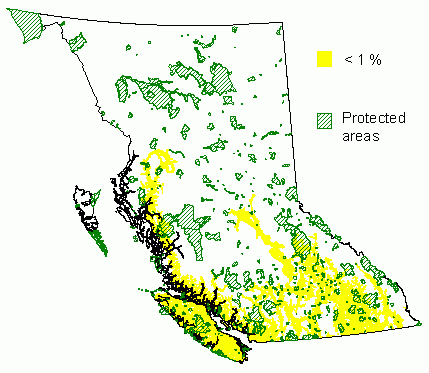 Bitter cherry
Bitter cherry
Prunus emarginata (Dougl.) Walp.
Introduction
Bitter cherry is a small to medium-sized tree. The species has a low shade tolerance and grows scattered in sparse woods, on riparian sites, or in open areas with a history of disturbance (Taylor and Taylor 1981). Bitter cherry trees then decline in vigor and numbers as the forest canopy closes. The life span of bitter cherry is only around 80 years (Klinka et al. 2000). Bitter cherry is most often found in cool, mountainous habitats. It is most frequent on slightly dry to moist soils. Bitter cherry is a valuable forage species for several birds and mammals and its dense thickets provide important cover. It is used for land reclamation and erosion control, and is also planted as an ornamental. Numerous insect pests and diseases are associated with cherry species. Insect pests include aphids, borers, and tent caterpillars. Bitter cherry is susceptible to trunk and root rot fungi. The bark, leaves and seeds are poisonous to humans and livestock (Taylor and Taylor 1981). The bark of bitter cherry was used widely by first peoples to make baskets. The wood was considered an excellent fuel (Turner 1979).
Bitter cherry grows in both the Pacific and Cordilleran regions, from the west coast and the southern interior of British Columbia to southern California, with disjunct populations even further south and east. A large part of its natural range of distribution is outside of British Columbia (Little 1976).
Distribution and Protected Areas – from Hamann et.al. 2005



Conservation Status Summary – from Chourmouzis et.al. 2009
“Bitter cherry is adequately protected on the coast in the CWH zone but likely not in the CDF where verification is recommended. In the interior, it is adequately protected in the ICH zone. In the more arid interior, protection is lacking in the BG and PP zones, and is low in the IDF zone. Bitter cherry is not expected to occur in any IDF, PP, or BG zone portion of a large, multi-zone protected area, nor is it protected in the southern Rocky Mountain Trench. Ground truthing is recommended in the IDF zone.”
Reproduction
Bitter cherry is a prolific fruit producer. It is pollinated by insects and the seeds are dispersed by birds and mammals. Good fruit crops occur annually (Banerjee et al. 2001). Seed can remain viable in the soil for many years (Kramer and Johnson 1987) and can be stored under dry conditions for up to one year (Taylor and Taylor 1981). The potential for natural regeneration is high if mineral soil is present. Bitter cherry reproduces vegetatively by sprouting.
Genetic structure
Bitter cherry hybridizes with pin cherry (Prunus pensylvanica) in the North Thompson and Shuswap valleys, where their ranges overlap (Taylor and Taylor 1981).
Resource management and seed transfer
No information available.
REFERENCES
Hamann, A., Smets, P., Aitken, S. N. and Yanchuk, A. D. 2005. An ecogeographic framework for in situ conservation of forest trees in British Columbia. Can. J. For. Res. 35:2553-2561. View online resources for this report.
C. Chourmouzis, A.D. Yanchuk, A. Hamann, P. Smets, and S.N. Aitken. 2009. Forest Tree Genetic Conservation Status Report 1: In situ conservation status of all indigenous BC species. Centre for Forest Conservation Genetics, Forest Genetics Council of BC, and BC Ministry of Forests and Range, Forest Science Program, Victoria, BC Technical Report 053. www.for.gov.bc.ca/hfd/pubs/Docs/Tr/Tr053.htm
Banerjee, S. M., Creasy, K. and Gertzen, D. D. 2001. Native woody plant seed collection guide for British Columbia. Crown Publications, Victoria. 147 p.
Klinka, K., Worrall, J., Skoda, L. and Varga, P. 2000. The distribution and synopsis of ecological and silvical characteristics of tree species of British Columbia’s forests. Canadian Cartographics Ltd., Vancouver. 180 p.
Kramer, N. B. and Johnson, F. D. 1987. Mature forest seed banks of three habitat types in central Idaho. Canadian Journal of Botany 65:1961-1966.
Little, E. L., Jr. 1976. Atlas of United States trees, volume 3, minor western hardwoods. U.S. Department of Agriculture Miscellaneous Publication 1314. 13 p., 290 maps.
Taylor, R. L. and Taylor, S. 1981. Prunus emarginata in British Columbia: bitter cherry, member of the family Rosaceae. Description, cultivation, ornamental and landscape plant. Davidsonia 12:78-83.
Turner, N. J. 1979. Plants in British Columbia Indian technology. B.C. Provincial Museum Handbook no. 38. BC Provincial Museum, Victoria, B.C. 304 p.
